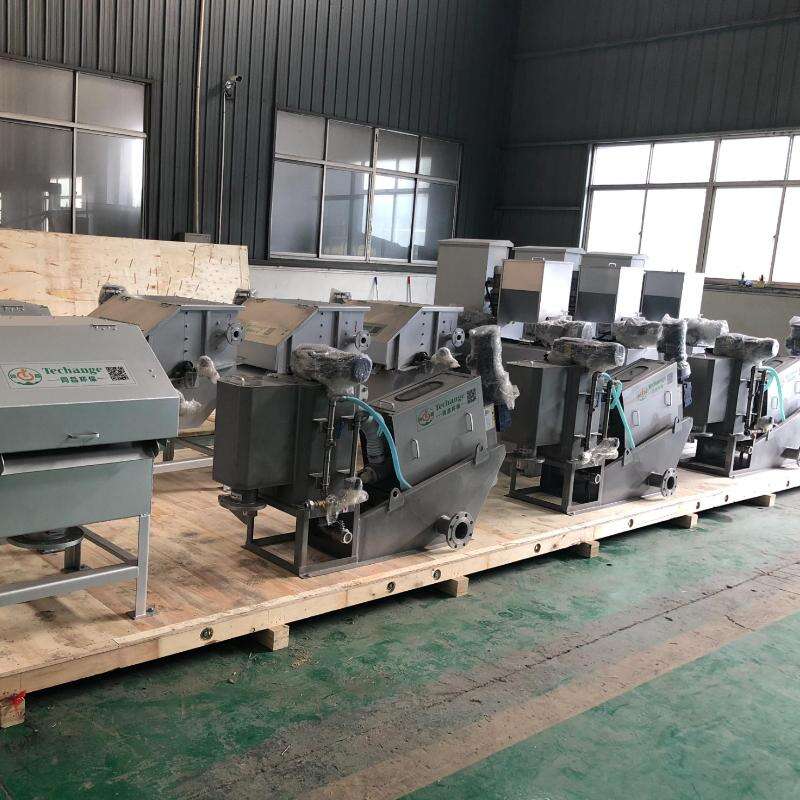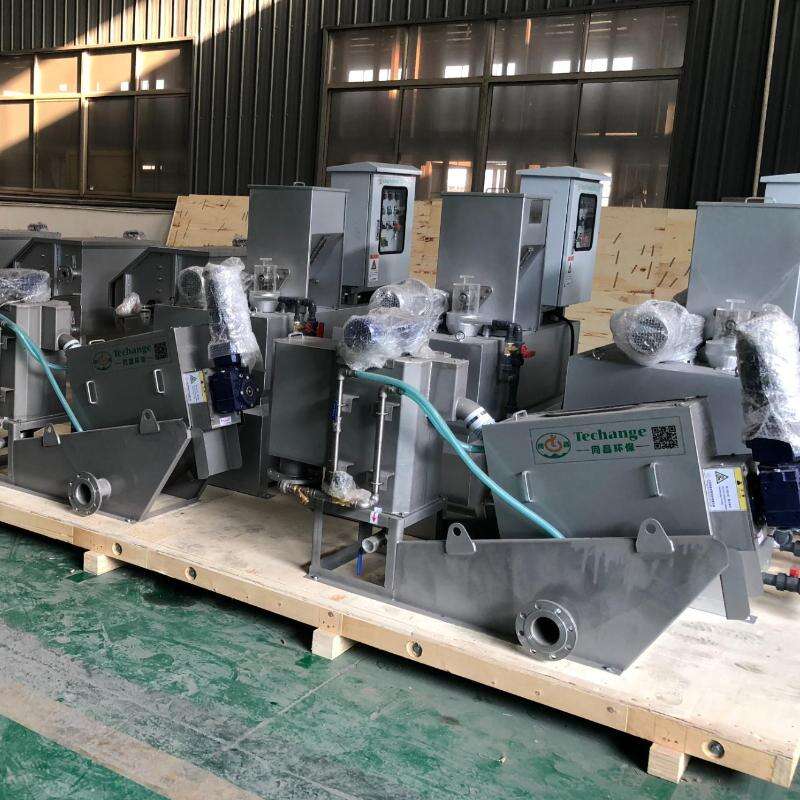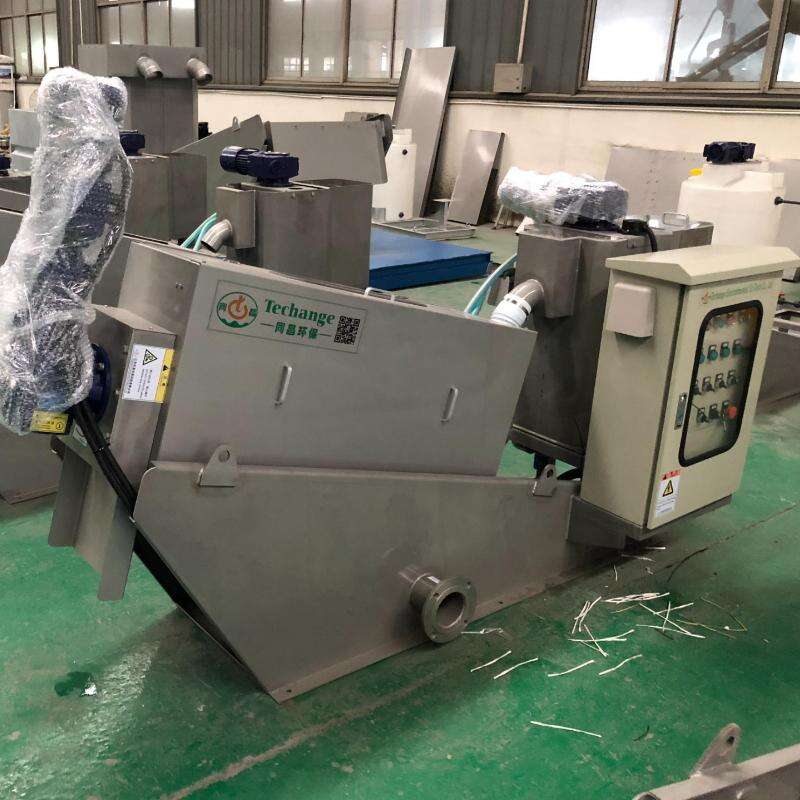Sludge, the not-so-magical byproduct of cleaning dirty water, has always been an important source of challenges for industries and cities across the world. Fortunately, the systems we use have been designed to manage it effectively. We need to get water out from the sludge, producing sludge with quantities and dampness so low that facilitate disposal and recycling. This article explains the magic behind how these systems work and why they are essential in waste management. Our sludge dewatering systems are sophisticated dewatering devices designed to employ cutting-edge machines and chemical processing to get water out of the sludge. We use this advanced technology, among other things, to cut out the need for prolonged drying and make the sludge volume and dampness smaller. These capabilities help us maintain that we are meeting environmental requirements while still achieving a slight to significant improvement in performance at our treatment plants. The environmental benefits of our systems are immeasurable because the more sludge we are producing, the more we have to dispose of. As things are, this usually involves discharging it through the landfill or incineration, both of which are environmentally messy. The water that is extracted during this process can also be treated for use in industrial operations or other non-potable applications. Our systems help to conserve energy by emitting low levels and reducing chemical usage, leading to less handling and transportation. Our systems employ minimal chemicals that are eco-friendly and biodegradable, which demonstrates our commitment to environmentally safe systems.
Lastly, advanced sludge dewatering systems are economically viable . The reduced sludge volume ultimately translates into reduced transportation and disposal costs, which is more cost-effective over time. It also leads to a significant reduction in water demand and subsequently, its costs. Additionally, these systems are generally energy efficient . Consequently, they use less power compared to traditional drying methods. Furthermore, production increases as they are capable of working round-the-clock with minimal interruption, which benefits economically. The high-value by-products of the sludge also presents a lucrative opportunity as they pay or subsidize technology investment. Furthermore, when run appropriately, the latest Daniatech Dewatering systems provide unsurpassed management results for overall waste and recover sludge for use as a valuable resource, such as fertilizer or fuel, by turning it into composts. After drying to the desired dryness, the sludge is treated before application to the land so that material does not have any pathogens, which is life threatening. Anaerobic digestion of the sludge can produce biogas from some of the processes. It is examples of a circular economy as a self-contained closed-loop system in a circular economy that can work complete on its own. It represents a new model in terms of energy consumption sustainability for an industrial plant and municipality.
One example is a food processing plant when its sludge was dewatered by a filter press; sludge was turned into nearly moisture-free dry cake. Consequently, the transformed by-product became a saleable soil conditioner and regular revenue plus saving on disposal costs. In another example, belt press utilization for sludge management could save textile industries over 30% of necessary energy, with enough biogas produced from the digested sludge that the operations become carbon-positive, and the operating expenditure is halved. What can be proven from these cases is the feasibility of the concept of the sludge dewatering technologies in one case and the innovative utilitarian scale of more advanced technologies in the other. As a result, with the ongoing global emphasis on sustainable waste management, our technologies make today’s wasted resources ready to be transformed into commodities for tomorrow, which make wealthier outcomes more sustainable and environmentally friendly future accessible for all. Unveiling the Productivity of Our Advanced Sludge Dewatering System Our sludge dewatering solutions are based on a core of mechanical & chemical processes variety. They utilize the latest available technology, including centrifuges/belt presses/filter presses adapted to the specific properties of the sludge . Their inherent productivity lies in waterming water from the sludge, making it turn wet, and reducing the mass that needs to be dried segment . Thus, subsequent disposal and transport are made easier and tending to environmental regulations tighter.
* The environmental benefits of drying sludge should be one of the first ones worth mentioning. In our case, the used sludge dewatering systems are based on the general concept of environmental stewardship; the dramatic reduction in sludge volume automatically implies less sludge disposal, whether by landfill or incineration and neither of them is eco-friendly. Moreover, our process provides large volume of water which potentially can be treated and recycled for industrial purposes or other non-potable uses – this way we save this scarce resource. The energy consumption is relatively low if to compare with the usual drying methods, as well as the emissions while handling and transporting. We can guarantee this up to the point of the least amounts of chemicals used during the processing, which means that they are environmental-friendly and can be fully degraded and must be semi-contained. * What can make the use of the advanced sludge dewatering systems economical? * In terms of economics, advanced sludge dewatering systems have a lot of advantages. First and foremost, if the sludge volume is minimized, the transport and disposal costs are minimized as well, which is, in its turn, profitable in the long term. The final water re-use equipment depreciates the overall takeout of raw water and the business will be charged less for using huge amounts of fresh and overall make the business more sustainable. Secondly, our systems are energy-efficient, which means that they will consume less power than drying techniques. Continuous operation minimizes the downtime, which is, again, great for the customer financially, more productive, ecologically-friendly, and bias to chemicals used during the processing. Converting the sludge to the high value byproducts generates profit streams which pay for the comprehensive technology investment.
The Power of Cutting-Edge Dewatering Systems: from Turning Waste into a Valuable Resource. PROCCESS Sludge Dewatering System is not only about how well the tackle the problem of waste but is also about transforming sludge into resources like compost, fertilizer, or even fuel. Of course, dewatered sludge would be treated further before land applying as a pathogen and contaminant-free resource. For instance, if one still is not up on this, sludge used for nourishing crops in agriculture creates biogas as a renewable energy—far from just good quality examples of circular economy projects and closed loop systems—a human-made ecosystem that incredibly closes the waste cycle to makes another type of sustainability model for industrial and municipal energy use. And if it comes to our success stories in various applications for dewatering of sludges, Here are a few examples: A Sludge Dewatering System that operates in sectors They install our centrifugation-based dewatering system at a large-scale municipal wastewater treatment plant and reduce the quantity of sludge produced by 70%, saving them over USD 3.0 million yearly in disposal costs. The plant also reintroduced reclaimed water into its iron removal process and reduced freshwater consumption by 20% without affecting the product quality. A filter press at a food processing facility in the industrial ecosystem made it possible to turn its sludge into a dry cake with less than 20% moisture. Thus, the biosolids could be sold as a soil conditioner, increasing revenue while cutting down the cost of disposal. A belt press at a textile mill, meanwhile, revolutionized the handling and processing of sludge and allowed sufficient biogas to be generated through the anaerobic digestion of sludge to satisfy over 30% of their energy demand.
As can be seen from the above examples, the potential of advanced sludge dewatering systems is to be a transformative technology where environmental stewardship is no longer about purchasing expensive chemicals for beneficial reuse – with almost as large an equipment carbon and economic footprint. As sustainable waste management is increasingly becoming a priority for the global community, our technologies pave the way to turning today’s landfilled trash into tomorrow’s sought-after resource.
Our sludge dewatering solutions are based on a combination of different mechanical & chemical processes at their core. These systems deploy state-of-the-art equipment, including centrifuges and belt presses or filter presses adapted to the specific properties of the sludge (industrial or municipal sewage). Their efficiency is achieved through extraction of water from the sludge, so reducing both volumes and moistness that needs drying in a prolonged operation. This not only makes subsequent handling and disposal easier, it also increases the overall capacity of the treatment plant at large to adhere to rigorous environmental regulations.

Our used sludge dewatering systems operate under the basic concept of environmental stewardship. The resultant dramatic reduction in sludge volume means less disposal by landfill or incineration, neither of which is environmentally friendly. Further our process extracts a large volume of water that can potentially be recycled through proper treatment for industrial processes or non-potable use saving this scarce resource. The reduced energy consumption when compared to traditional drying methods and lower emissions when handling or transporting adds further sustainability. We assure this down to the fact that we use as little chemicals during processing, which are environmentally friendly and also be fully degradable.

Advanced sludge dewatering systems offer a wealth of economic advantages. Most notably, if the sludge volume is reduced, transport and disposal costs are greatly saved; hence long-term profit. The water re-use also depreciate the overall takeout of raw water leading to lowered bills for using smaller amount fresh and more sustainable business operation. Another financial advantage is that our systems are energy efficient using less power than traditional drying techniques. Continuous operation and reduced downtime enhances productivity which increases economic benefits. And converting sludge to high value byproducts generates additional revenue streams, recouping the initial comprehensive technology investment.

PROCCESS Sludge Dewatering Systems beyond treating waste effectively convert sludge into resources like compost, fertilizer or even fuel. After the sludge has been dewatered to a suitable dryness level, it would be treated further before becoming pathogen and contaminant free for land application. In some cases, anaerobic digestion of sludge produces biogas as a renewable energy. Instead, they are perfect examples of circular economy projects and their closed loop systems - a human-made ecosystem that seamlessly closes the waste cycle, in turn promoting a new type of sustainability model for both industrial and municipal energy use.
will comply with your specifications as well as those of the applicable specifications. will sludge dewatering system the production of machines equipment in a superior way, will check the quality of bought accessories.The product is covered by a warranty of one year for free. After that, the customer will be able to avail after-sales support as long as they like only to pay for the cost.
We have advanced laser cutting machine CNC bending machine that ensures deliver products to customers within the time frame in conformity with their specifications.Our team consists of highly trained professionals who have advanced degrees in environmental science, engineering other related fields. Many team members have over 10 years of experience in research and development. Hey, have invented several patents for our company.
Jiangsu Techange Environmental Sci-Tech Co., Ltd. was established in the month of October 2008. specialize in the export wastewater treatment equipment since 2009. We a highly skilled manufacturer and designer of sludge dewatering system treatment equipment located in Yangzhou, Jiangsu, China. are well-known throughout Europe, North America Asia.
machines are ISO 9001, SGS, certified. sludge dewatering system the engineering design, technical staff will offer rational suggestions on selection of products the user and designer of the project in order to ensure that the advantages of each machine when it comes to the construction of the project maximised.
Sludge dewatering systems operating in sectors By employing our centrifuge-based dewatering system at a large-scale municipal wastewater treatment plant, they were able to reduce their sludge volume by 70%, saving them millions of dollars annually in disposal costs. In addition, the plant successfully re-integrated reclaimed water to its iron removal operations and thus nearly eliminated use of freshwater by 20% without affecting product quality.
A food processing facility in the industrial landscape saw our filter press technology and was able to turn its sludge into a dry cake, containing less than 20% of any moisture. This in-turn, enabled the byproduct to be sold off as a soil conditioner providing increased revenues and cost of disposalimating.
In another case, at a textile mill where one of our belt press technologies revolutionized the handling and processing of sludge while generating sufficient biogas from anaerobically digested sludge to offset more than 30% their energy needs - thus significantly improve carbon emissions performance & cutting filthy-gross power costs.
These examples illustrate that advanced sludge dewatering systems have the potential to be a transformative technology, where environmental stewardship is no longer just about purchasing expensive chemicals for beneficial reuse - with almost as large an equipment carbon and economic footprint. As sustainable waste management becomes a global priority, our technologies forge the path to turn today's landfilled trash into tomorrow's sought after resource.